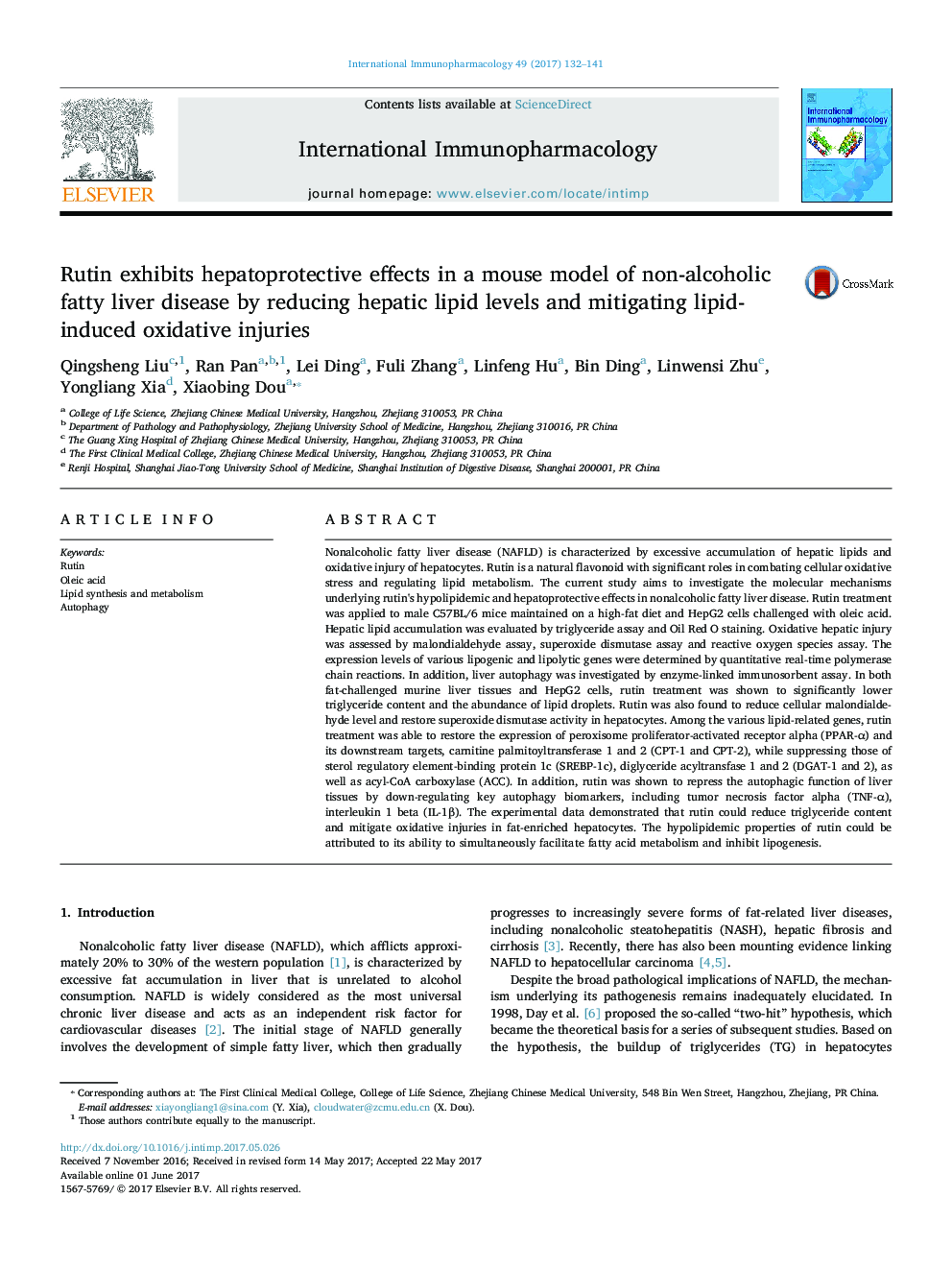| کد مقاله | کد نشریه | سال انتشار | مقاله انگلیسی | نسخه تمام متن |
|---|---|---|---|---|
| 5555440 | 1559741 | 2017 | 10 صفحه PDF | دانلود رایگان |
- Rutin can lower lipid levels in fat-challenged murine liver tissues and HepG2 cells.
- Rutin can mitigate oxidative stress in fat-challenged liver tissues and cells.
- Rutin can regulate the expression of key lipolytic and lipogenic genes.
- Rutin can reduce autophagy in liver tissues by suppressing TNFα and IL-1β.
Nonalcoholic fatty liver disease (NAFLD) is characterized by excessive accumulation of hepatic lipids and oxidative injury of hepatocytes. Rutin is a natural flavonoid with significant roles in combating cellular oxidative stress and regulating lipid metabolism. The current study aims to investigate the molecular mechanisms underlying rutin's hypolipidemic and hepatoprotective effects in nonalcoholic fatty liver disease. Rutin treatment was applied to male C57BL/6 mice maintained on a high-fat diet and HepG2 cells challenged with oleic acid. Hepatic lipid accumulation was evaluated by triglyceride assay and Oil Red O staining. Oxidative hepatic injury was assessed by malondialdehyde assay, superoxide dismutase assay and reactive oxygen species assay. The expression levels of various lipogenic and lipolytic genes were determined by quantitative real-time polymerase chain reactions. In addition, liver autophagy was investigated by enzyme-linked immunosorbent assay. In both fat-challenged murine liver tissues and HepG2 cells, rutin treatment was shown to significantly lower triglyceride content and the abundance of lipid droplets. Rutin was also found to reduce cellular malondialdehyde level and restore superoxide dismutase activity in hepatocytes. Among the various lipid-related genes, rutin treatment was able to restore the expression of peroxisome proliferator-activated receptor alpha (PPAR-α) and its downstream targets, carnitine palmitoyltransferase 1 and 2 (CPT-1 and CPT-2), while suppressing those of sterol regulatory element-binding protein 1c (SREBP-1c), diglyceride acyltransfase 1 and 2 (DGAT-1 and 2), as well as acyl-CoA carboxylase (ACC). In addition, rutin was shown to repress the autophagic function of liver tissues by down-regulating key autophagy biomarkers, including tumor necrosis factor alpha (TNF-α), interleukin 1 beta (IL-1β). The experimental data demonstrated that rutin could reduce triglyceride content and mitigate oxidative injuries in fat-enriched hepatocytes. The hypolipidemic properties of rutin could be attributed to its ability to simultaneously facilitate fatty acid metabolism and inhibit lipogenesis.
Journal: International Immunopharmacology - Volume 49, August 2017, Pages 132-141
